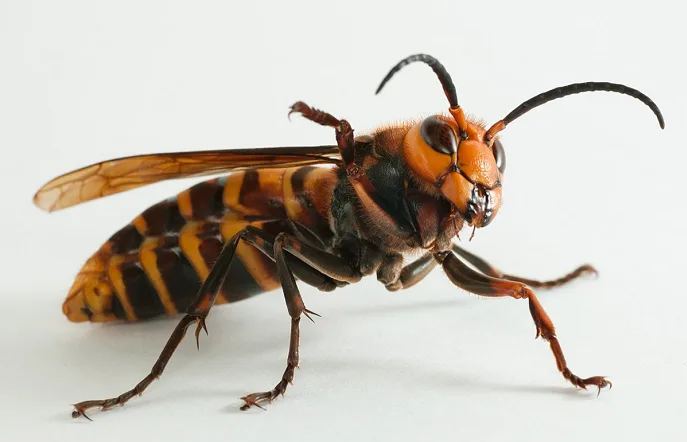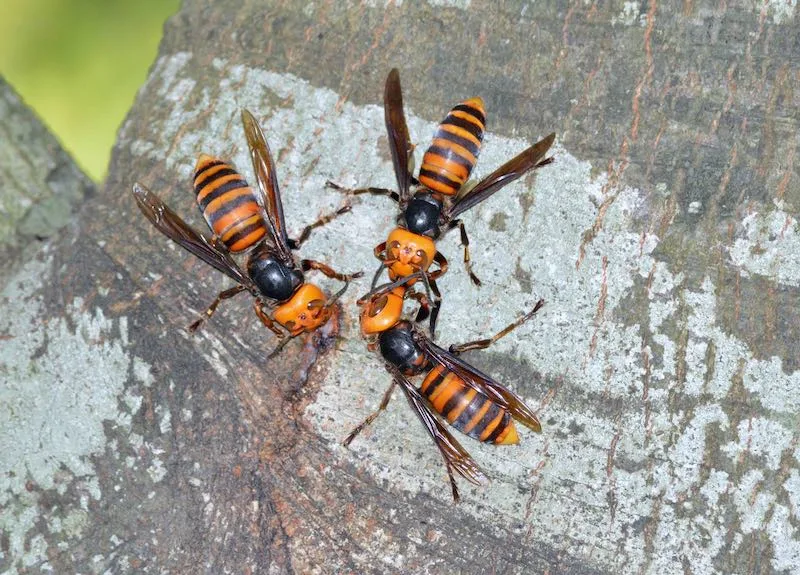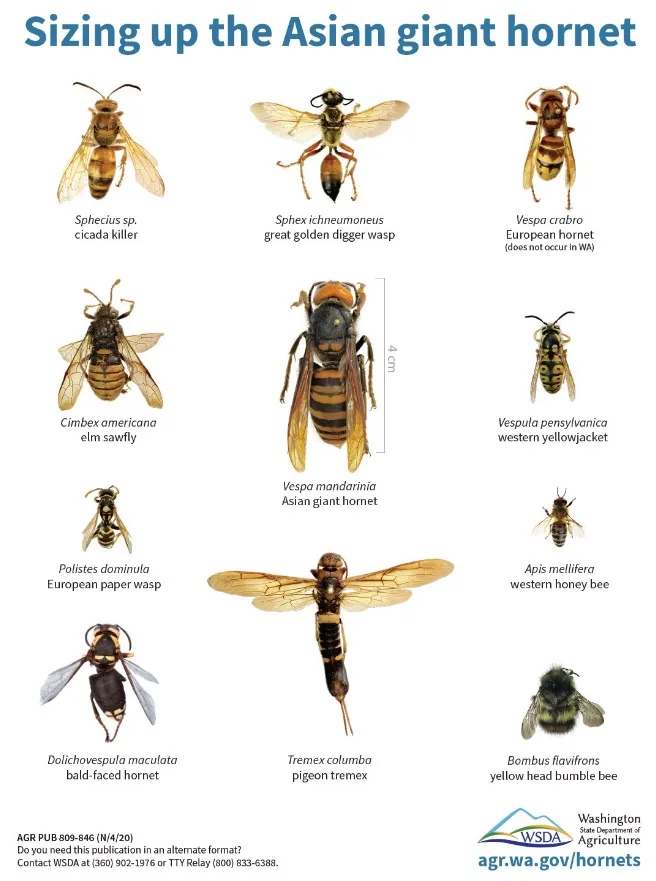
More Asian giant hornets eradicated in the Pacific Northwest, sparks concerns
Last month, individual Asian giant hornets were discovered and killed in Langley, B.C., and in Washington state, leading some experts to believe their spread may be more expansive than previously thought.
A total of two more Asian giant hornets have been found and killed in the Pacific Northwest recently - one in British Columbia and the other in Washington state - the same regions where they've been previously discovered.
The first one was found May 15 by a woman in Langley, B.C., who saw and immediately killed the hornet, then sent a picture to provincial authorities.
The following day, provincial apiculturist Paul van Westendorp confirmed it was an Asian giant hornet. The insect was dubbed "murder" hornets from several media outlets, a moniker that is frowned upon by experts, because of their attack on honeybees.
"As you can see, this is a large, formidable insect," van Westendorp said as he held up a hornet during an interview with CTV News.
RELATED: Asian giant hornets: A lot more buzz than sting, experts say
The insect, about twice as large as native B.C. hornets, was discovered for the first time in the province in August 2019 in Nanaimo. The nest was located and destroyed.
Following that, a single giant hornet turned up in White Rock last November, while a pair of them were found just across the border, near Blaine, Wash., in December. The latest B.C. discovery has provincial authorities reconsidering their strategy in eliminating the invasive species.
"Now suddenly we realize we're dealing with a much larger geographical area," Van Westendorp said.

Experts don't believe the population of Asian giant hornets will surge across Canada. Photo: Getty Images.
Experts have stated that the Asian giant hornet poses minuscule risk to humans, unless they are allergic to stings in general and/or are stung multiple times, at which point, medical attention is recommended.
DEAD HORNET FOUND IN WASHINGTON WAS A QUEEN
Meanwhile, across the border in Washington state, a dead Asian giant hornet found at the end of May was confirmed by officials to be a queen.
The Washington State Department of Agriculture said it was the first confirmed sighting of an Asian giant hornet in the state this year. Officials stated the queen was also mated, and if she had begun a nest it won't survive without her.
Sven-Erik Spichiger, who works with the Department of Agriculture, told King 5 that since this individual was a queen, it signals a potentially bigger problem in the race to eradicate the pests.
"What that means is something made it through the winter, and since colonies can produce a few hundred queens, it means we probably have a few more to look for as well, which is why it’s significant," said Spichiger.
British Columbia scientists are working with their U.S. counterparts in efforts to eradicate the species so they don't spread. It is believed the hornets likely arrived in North America by international cargo, in some cases deliberately, so there is a chance of more sightings in the future.
FALSE SIGHTINGS IN ONTARIO: EUROPEAN HORNET FOUND
In Ontario, recent video and photos surfaced online appearing to show the invasive insect had arrived in the province, but those sightings were confirmed to be of a different species - the European hornet.
Paul Kozak, Ontario’s lead apiarist, received numerous reports of the giant hornets in eastern Ontario, Toronto and Niagara Falls area. He confirmed to The Record recently that people are not encountering the much-feared Asian giant hornet, but rather the European hornet.

Comparison of the different types of hornets. Photo: Washington State Department of Agriculture.
“People are seeing the European hornet, which is a different species, Vespa crabro,” said Kozak. “As far as we know, we have no information to suggest that we have Asian giant hornets in Ontario. Every specimen they’ve seen has been identified as Vespa crabro."
European hornets are slightly smaller in size than the Asian giant hornet and can grow 25-35 millimetres from head to abdomen. “The likelihood of us having an actual case of Asian giant hornet is still low, but increased since it was confirmed on the West Coast.” said Kozak. “We want to remain vigilant and do our due diligence.”
Thumbnail courtesy of Wikimedia Commons.
Sources: CTV | The Record | King 5











